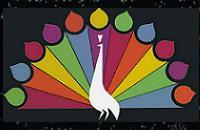I’ve learned two things in the past couple of decades:
1) Memorize important phone numbers.
2) To learn a new field – get the jargon down.
Jargon catapults you from a mailroom clerk to a business equal in any discussion. No wonder Liza Dolittle was hailed as a princess at the ball. She knew the customs and the jargon: “How nice of you to let me come.”
Imagine that you want to switch careers, for example, from Finance to Media. You might switch wht you’re reading: goodbye Wall Street Journal and Financial Times, hello Daily Variety and Cable & Broadcasting. You might start following weekend box office profits rather than the S&P500.
The jargon of a business, an industry, a group of people tells you so much about the people. Jargon crystalizes the concerns, major attitudes, expectations of a whole new world. Jargon is like the Cliffs’ Notes to a business.
On Wall Street, daily jargon includes matching people that bring “value added” to projects, giving the client everything “from soup to nuts”, looking at the big picture “at the end of the day,” and examining worst-case scenarios for “when the shit hits the fan.” The irony is the same phrases that sound cliche also make a lot of sense at the same time! Value added is one of the most important ideas in business. The best possible end-of-year review commends the employee for adding value to the firm.
An idea tediously pervasive in a culture is often surprisingly acute. Cliches often summarize the crux of an issue. The contradictions in “out of sight, out of mind” and “distance makes the heart grow fonder” underscore the conflict of having a close friend move far away.
Similarly, old wives’ tales are effective despite being common knowledge. The best way to cure a cold is still chicken soup, drinking liquids, and staying in bed.
Listening for the jargon in people’s speech is like picking up pieces of quantum speech, useful tidbits. Have you ever noticed that you speak differently to different people or to different groups of people? You just don’t use as many “like”s when making a presentation or speaking in front of a class.
Two people find a common wavelength to speak on. The wavelength may include common jargon, and jargon or mannerisms from each person. Jargon may get transmuted this way, like a telephone game, from person to person to person. Bits of quantum speech traveling the world.


